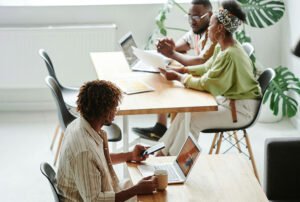May 14, 2010; Source: City Limits | One of the great organizing successes of the nonprofit sector in the past few decades is the nationwide mobilization against bank redlining. Organizations such as the Center for Responsible Lending, the National Community Reinvestment Coalition, and National People’s Action along with their local and regional affiliates turned the tide on banks deciding to lend not based on the borrower’s ability to pay, but the racial or ethnic demographic of the neighborhood—or sometimes the specific racial/ethnic character of the borrower.
One might have guessed this was going to occur, but in the wake of the recession in which banks immolated themselves with subprime mortgages, some banks have returned to the good old days of redlining—except that the redlining pattern seems to have revived prior to the recession, though not before the harbingers of the subprime catastrophe were visible for all to see.
Sign up for our free newsletters
Subscribe to NPQ's newsletters to have our top stories delivered directly to your inbox.
By signing up, you agree to our privacy policy and terms of use, and to receive messages from NPQ and our partners.
In a new report [PDF] New York City’s Neighborhood Economic Development Advocacy project along with partner organizations in six other cities found that conventional mortgage and home equity financing in minority neighborhoods dropped sharply between 2006 and 2008 (especially after 2007). “Quality mortgage lending” dropped 40 percent in communities where 80 percent of the residents were people of color compared to 23 percent in neighborhoods that were 90 percent white. Refinance loans were down 68 percent in communities of color compared to 39 percent in white communities. Interestingly, the nation’s bailout-subsidized banks—Bank of America, Citigroup, JP Morgan Chase, and Wells Fargo—actually increased their refinancing in white neighborhoods by 32 percent in the seven cities while cutting their refinancing in minority neighborhoods by one-third. Why is this happening?
The study does not have data on the individual borrowers’ creditworthiness, but one might guess that with subprime mortgages tanking even during the time period covered in the study, the big banks rediscovered behaviors that amount to redlining under the guise of returning to prudent and cautious lending practices.—Rick Cohen













